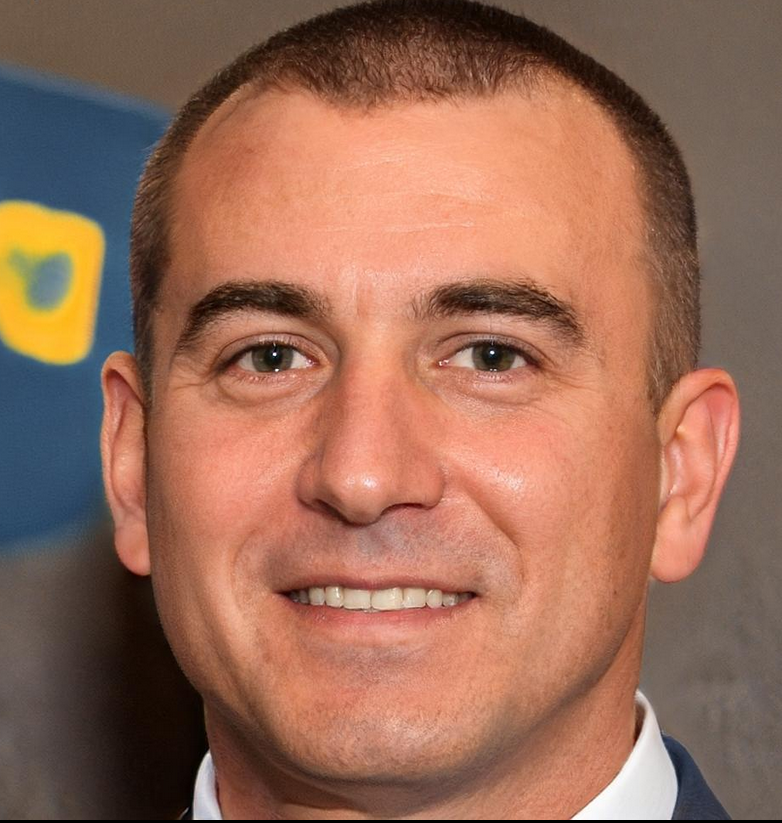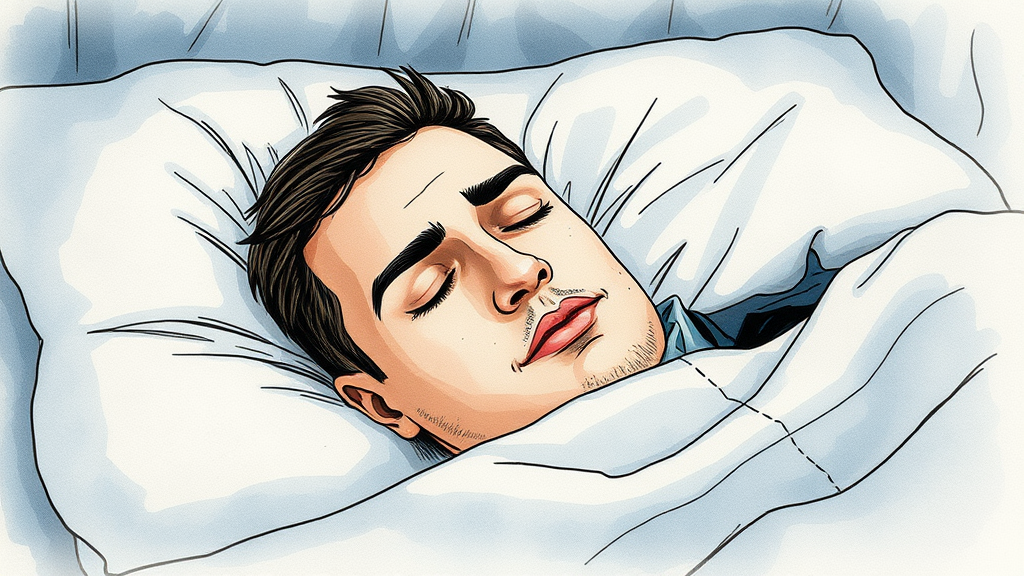· Don Schmidt · Guides · 14 min read
The Ultimate Guide to CBT-I Sleep Therapy for First Responders: Mastering Sleep in High-Stakes Emergency Services
The definitive CBT-I guide for first responders. Master proven techniques for insomnia, PTSD, shift work, trauma recovery. Transform your sleep, enhance emergency response, protect your career.

The Silent Crisis in Emergency Services: Why Sleep is Your Most Critical Tool
First responders face a hidden epidemic that threatens their safety, effectiveness, and career longevity more than any emergency call: chronic sleep deprivation. While you dedicate your life to protecting others, sleep disorders silently undermine your ability to respond effectively while devastating your physical and mental health.
This ultimate guide provides the most comprehensive, evidence-based approach to conquering sleep challenges through Cognitive Behavioral Therapy for Insomnia (CBT-I). Unlike temporary fixes or dependency-forming medications, CBT-I offers permanent solutions that enhance every aspect of emergency response while protecting your long-term health and professional sustainability.
Understanding CBT-I: The Science Behind Sleep Recovery
Cognitive Behavioral Therapy for Insomnia emerged in the late 1980s when sleep researchers made a revolutionary discovery: chronic insomnia isn’t merely a symptom of stress—it’s a learned pattern of thoughts, behaviors, and physiological responses that can be systematically unlearned. Dr. Charles Morin’s groundbreaking work demonstrated that CBT-I addresses the root causes of sleep dysfunction rather than simply masking symptoms.
The foundational principle is both elegantly simple and profoundly transformative: your thoughts, emotions, and behaviors are interconnected and directly influence your sleep quality. When you modify dysfunctional sleep-related patterns, you naturally restore healthy sleep architecture. This approach has demonstrated superior long-term effectiveness compared to sleep medications, with 70-80% of participants experiencing significant, lasting improvements.
The Complete CBT-I Toolkit: Evidence-Based Strategies for Emergency Personnel
CBT-I employs multiple evidence-based techniques, each targeting specific aspects of sleep dysfunction. Think of it as a comprehensive emergency response toolkit where each strategy serves a distinct purpose in rebuilding your sleep foundation.
Sleep Hygiene Optimization: Building Your Recovery Base
Sleep hygiene forms the operational foundation of healthy sleep practices. For first responders, this means establishing consistent protocols that work within your demanding schedule:
- Environmental Control: Transform your bedroom into a recovery command center. Install blackout curtains for daytime sleep after night shifts. Maintain temperatures between 65-68°F (18-20°C). Eliminate noise disruptions with high-quality earplugs or white noise machines designed for emergency personnel.
- Technology Boundaries: Blue light from screens disrupts melatonin production for up to 3 hours. Implement a “communication blackout” 1-2 hours before intended sleep time. Use blue light blocking glasses if emergency notifications or continuing education require screen use.
- Pre-Sleep Protocols: Develop a 30-60 minute decompression routine that signals your nervous system to transition from high-alert emergency mode to recovery state. This might include tactical breathing exercises, progressive muscle relaxation, or reading non-emergency related material.
Stimulus Control Therapy: Reestablishing Sleep-Bed Association
Your bed should trigger only two automatic responses: sleep and intimacy. Stimulus control therapy systematically breaks the destructive association between your bed and work-related hypervigilance:
- The 20-Minute Rule: If you cannot achieve sleep onset within 20 minutes, immediately leave your bedroom and engage in quiet, non-stimulating activities until natural sleepiness returns.
- Bed Restriction Protocol: Utilize your bed exclusively for sleep and intimacy. Eliminate all non-sleep activities including phone use, case review, emergency procedure study, or worry sessions about calls.
- Consistency Despite Chaos: Even with rotating shifts and unpredictable calls, maintain maximum possible consistency in sleep timing during off-duty periods.
Sleep Restriction Therapy: Maximizing Sleep Efficiency
This counterintuitive but highly effective technique involves temporarily constraining time in bed to match actual sleep duration, creating controlled sleep deprivation that promotes deeper, more consolidated rest:
- Efficiency Calculation: Monitor total sleep time versus time in bed using sleep tracking methods. Initially restrict bed time to match actual sleep duration.
- Progressive Expansion: As sleep efficiency improves above 85%, gradually increase bed time by 15-30 minutes weekly.
- Alert Readiness: Avoid compensatory napping during restriction phases to build stronger sleep pressure for primary sleep periods, maintaining emergency response readiness.
Cognitive Restructuring: Neutralizing Sleep-Sabotaging Thoughts
First responders often develop catastrophic thinking patterns about sleep that perpetuate insomnia cycles:
Common Dysfunctional Beliefs and Evidence-Based Reframes:
- “If I don’t get 8 hours, I’ll be dangerous on calls” → “I’ve responded effectively on less sleep before, and one poor night won’t compromise my training and experience”
- “My insomnia will end my first responder career” → “Sleep problems are treatable, and I’m taking proactive steps to improve my emergency response capabilities”
- “I can’t sleep normally with this job” → “Many successful first responders maintain good sleep health with proper strategies and consistency”
Advanced Relaxation Protocols: Deactivating Emergency Hypervigilance
Emergency work requires sustained hypervigilance that can interfere with sleep transition. These techniques systematically activate your parasympathetic nervous system:
- Progressive Muscle Relaxation: Systematically tense and release muscle groups from toes to head, promoting physical and mental relaxation after intense emergency responses.
- Tactical Breathing (Box Breathing): Inhale for 4 counts, hold for 4, exhale for 4, hold for 4. This pattern naturally calms your autonomic nervous system after high-stress emergency situations.
- Body Scan Meditation: Mentally survey your body from head to toe, identifying and releasing accumulated tension from physical demands of emergency work.
- Safe Space Imagery: Visualize peaceful, secure environments that contrast with high-stress emergency scenarios.
The First Responder Sleep Challenge: Understanding Your Unique Obstacles
First responders confront sleep challenges that standard CBT-I protocols don’t adequately address. Understanding these profession-specific factors is essential for successful treatment adaptation.
Shift Work Sleep Disorder: Battling Circadian Chaos
Rotating shifts and unpredictable call schedules create chronic circadian rhythm disruption, leading to:
- Biological Clock Confusion: Your circadian system becomes desynchronized with natural light-dark cycles
- Accumulated Sleep Debt: Irregular schedules prevent consistent sleep duration maintenance
- Social and Family Disruption: Your sleep needs often conflict with family time and social obligations
Strategic Solutions for Emergency Shift Workers:
- Implement strategic bright light therapy upon waking to reset circadian timing
- Consider melatonin supplementation 30 minutes before intended sleep (consult healthcare provider)
- Establish “anchor sleep” periods—maintain at least 4 hours of consistent sleep timing even on days off
Trauma and Critical Incident Stress: When Emergencies Invade Sleep
Exposure to traumatic emergency calls creates unique sleep pathology:
- Hypervigilance Persistence: Your nervous system maintains heightened alertness, preventing natural sleep transition
- Intrusive Sleep Disruption: Nightmares, flashbacks, and hyperstartle responses fragment sleep architecture
- Moral Injury: Difficult decisions and tragic outcomes can create rumination that prevents rest

The Adrenaline Factor: Managing Post-Emergency Physiology
High-stress emergency responses trigger massive adrenaline and cortisol release that can persist for hours, making immediate post-shift sleep physiologically challenging. Your body requires structured decompression protocols to transition from life-saving mode to recovery state.
Adapting CBT-I for First Responder Success: Specialized Protocols
Standard CBT-I requires significant modification for first responders. Leading sleep specialists have developed emergency services-specific adaptations:
Trauma-Informed CBT-I Approaches
- Safety-Prioritized Relaxation: Some relaxation techniques may trigger trauma responses in first responders with PTSD. Begin with breathing exercises and gradually introduce other techniques based on individual tolerance.
- Critical Incident Integration: Incorporate techniques that help process traumatic calls while promoting sleep recovery.
- Resilience Building: Address secondary trauma and cumulative stress that can interfere with sleep through specific cognitive techniques.
Emergency Schedule Optimization Strategies
- Flexible Sleep Architecture: Rather than rigid sleep timing, focus on sleep quality and consistency within shift blocks and call patterns.
- Strategic Power Napping: Learn to utilize tactical naps effectively without disrupting primary sleep periods or emergency readiness.
- Circadian Rhythm Management: Use light exposure, meal timing, and temperature regulation strategically to maintain biological clock alignment despite irregular schedules.
Occupational Stress Integration
- Call Decompression Protocols: Develop structured routines for emotional and physiological recovery after difficult emergency responses.
- Duty-to-Personal Transition: Learn to mentally “clear the scene” from emergency responsibilities through specific cognitive techniques.
- Physical Recovery Methods: Address the somatic aftermath of emergency adrenaline through targeted relaxation and movement.

Research Evidence: What Science Shows About CBT-I for First Responders
Extensive research specifically examining CBT-I in first responder populations demonstrates remarkable effectiveness:
Clinical Trial Outcomes
A landmark study published in Journal of Consulting and Clinical Psychology followed 78 first responders with chronic insomnia through an 8-week modified CBT-I program:
- Sleep Onset Improvement: Average time to fall asleep decreased from 51 minutes to 22 minutes
- Sleep Efficiency Enhancement: Sleep efficiency improved from 66% to 88%
- Emergency Response Benefits: Significant improvements in reaction time, decision-making under pressure, and stress resilience
- PTSD Symptom Reduction: 62% of participants showed decreased trauma-related symptoms
Long-Term Sustainability Data
Follow-up studies at 6 and 12 months reveal that CBT-I benefits for first responders are:
- Durable: Sleep improvements maintained at 1-year follow-up in 79% of participants
- Progressive: Many first responders continued improving beyond active treatment completion
- Protective: Reduced rates of workplace injuries, critical incidents, and career burnout
Comparative Effectiveness Research
Compared to sleep medications alone, CBT-I for first responders demonstrates:
- Superior long-term outcomes: Benefits persist after treatment discontinuation
- Enhanced emergency performance: No cognitive impairment during critical responses
- Improved stress resilience: Better emotional regulation and trauma processing
- Economic advantages: Lower healthcare costs and reduced workers’ compensation claims
Overcoming Implementation Barriers: Making CBT-I Accessible to First Responders
Despite proven effectiveness, several barriers can prevent first responders from accessing CBT-I. Identifying and addressing these obstacles is crucial for successful implementation.
Cultural and Stigma Challenges
The Challenge: Emergency services culture often views mental health treatment as incompatible with fitness for duty and operational readiness.
Evidence-Based Solutions:
- Reframe CBT-I as operational performance enhancement rather than mental health treatment
- Provide education about sleep’s critical role in emergency response effectiveness and safety
- Utilize peer advocates who can share success stories and normalize help-seeking
- Emphasize CBT-I’s alignment with tactical training and professional competence
Access and Resource Limitations
The Challenge: Limited availability of CBT-I-trained providers, especially those familiar with emergency services culture and schedules.
Strategic Solutions:
- Develop first responder-specific telehealth CBT-I programs
- Train Employee Assistance Program providers in CBT-I techniques
- Create group CBT-I programs tailored to specific emergency services departments
- Establish partnerships with sleep centers for first responder-specific programming
Scheduling and Consistency Obstacles
The Challenge: Unpredictable emergency calls, mandatory overtime, and rotating shifts make consistent therapy participation difficult.
Adaptive Solutions:
- Offer flexible scheduling including overnight and weekend options
- Develop intensive workshop formats that accommodate shift patterns and call schedules
- Utilize mobile applications and digital tools for between-session practice
- Create self-paced CBT-I modules accessible 24/7 from department computers or personal devices
Advanced Optimization Strategies: Maximizing Your CBT-I Investment
Physical Fitness Integration
Sleep and physical fitness create a synergistic relationship critical for first responders:
- Exercise Timing: Avoid intense workouts within 4 hours of intended sleep time, but maintain regular physical activity for stress relief and operational readiness
- Recovery-Focused Training: Incorporate yoga, stretching, and mobility work into your routine to counteract physical demands of emergency work
- Sleep as Tactical Advantage: Recognize quality sleep as essential for reaction time, decision-making, and stress tolerance during emergencies
Nutritional Sleep Support
Strategic nutrition choices significantly enhance CBT-I effectiveness for first responders:
- Caffeine Management: Limit caffeine intake to the first half of your wake period, avoiding energy drinks during long shifts
- Meal Timing: Align eating patterns with your sleep schedule to support circadian rhythm regulation
- Emergency Nutrition: Plan healthy snacks during long calls that won’t interfere with sleep quality
Technology Enhancement
Leverage technology to support your CBT-I practice:
- Sleep Monitoring: Use wearable devices to track sleep patterns and quantify improvements
- CBT-I Applications: Supplement therapy with evidence-based apps designed for shift workers and first responders
- Environmental Optimization: Employ smart thermostats, sunrise alarm clocks, and white noise systems
Developing Your Personal CBT-I Action Plan
Phase 1: Assessment and Baseline Establishment (Weeks 1-2)
- Complete comprehensive sleep diary documentation including shift patterns and call responses
- Assess current sleep hygiene practices and identify emergency service-specific challenges
- Determine trauma exposure and critical incident stress factors affecting sleep
- Establish quantifiable baseline measurements for progress tracking
Phase 2: Core Technique Implementation (Weeks 3-6)
- Implement sleep restriction therapy adapted for emergency schedules
- Practice stimulus control techniques with consideration for on-call responsibilities
- Begin systematic cognitive restructuring of emergency-related sleep thoughts
- Develop personalized relaxation protocols for post-call decompression
Phase 3: Integration and Optimization (Weeks 7-10)
- Fine-tune techniques based on individual response and emergency service demands
- Address remaining obstacles including trauma processing and stress management
- Develop comprehensive long-term maintenance strategies
- Prepare for high-stress periods (natural disasters, major incidents, personnel changes)
Phase 4: Mastery and Leadership (Ongoing)
- Conduct monthly progress evaluations and technique adjustments
- Maintain consistent practice of core CBT-I principles
- Integrate advanced optimization strategies as appropriate
- Provide peer support and mentorship to fellow first responders
The Economics of Sleep in Emergency Services: Return on Investment Analysis
Direct Cost Benefits
Implementing CBT-I creates measurable financial advantages for first responders:
- Reduced Sick Leave: Enhanced immune function leads to fewer illness-related absences
- Lower Healthcare Utilization: Decreased need for sleep medications and treatment of sleep-related health problems
- Reduced Workers’ Compensation Claims: Fewer fatigue-related injuries and incidents during emergency responses
Performance and Public Safety Returns
- Enhanced Emergency Response: Well-rested first responders demonstrate superior performance under pressure
- Improved Decision-Making: Better judgment during critical incidents and life-threatening situations
- Reduced Response Errors: Lower rates of mistakes during emergency procedures
- Extended Career Longevity: Better overall health supports longer, more productive emergency service careers
Organizational Benefits
Emergency services departments investing in personnel sleep health experience:
- Improved Team Cohesion: Teams function more effectively when members are well-rested
- Reduced Liability: Lower risk of fatigue-related incidents and associated legal costs
- Enhanced Public Safety: More effective emergency response capabilities
- Recruitment Advantages: Progressive wellness programs attract high-quality first responder candidates
Emerging Research and Future Developments
Personalized CBT-I Protocols
Researchers are developing individualized approaches based on:
- Emergency service specialty-specific sleep challenges
- Individual circadian rhythm patterns and shift tolerance
- Personal trauma exposure profiles and resilience factors
- Genetic factors influencing sleep architecture and stress response
Integrated Trauma-Sleep Treatment
New protocols coordinate CBT-I with critical incident stress management to provide:
- Synchronized treatment of sleep and trauma symptoms
- Enhanced overall resilience and job performance
- Reduced total intervention time through integrated approaches
Advanced Digital Therapeutics
Next-generation platforms feature:
- AI-powered sleep coaching tailored to emergency service schedules
- Real-time physiological monitoring during shifts
- Adaptive treatment protocols based on call patterns and individual responses
- Virtual reality-enhanced relaxation environments for fire stations and emergency services facilities
Healthcare Coverage and Access in Canada
Coverage for CBT-I therapy varies significantly across Canada’s healthcare system. While mental health services are generally included in publicly funded healthcare, access and coverage extent differ by province and provider type.
In Alberta, mental health services operate under Alberta Health Services (AHS). However, direct access to psychologists for CBT-I may require referrals from family physicians and may only be fully covered within public hospital or community mental health settings, which often have limited capacity and extended wait times.
Many first responders have comprehensive private health insurance through their employers or unions that may provide coverage for psychological services, including CBT-I. Coverage varies between plans but is often more generous for emergency services personnel.
For first responders specifically, some departments and services have Employee Assistance Programs (EAPs) that may include CBT-I services or referrals. Many also have critical incident stress management programs that may incorporate sleep health components.
Recommended Actions:
- Verify specific CBT-I coverage with your provincial health ministry and employer insurance
- Inquire with your EAP, union representatives, or department wellness coordinators about available mental health benefits
- Explore department-specific wellness resources and critical incident stress management programs
Implementation Roadmap: Your Path to Sleep Mastery
Finding Qualified Providers
Seek therapists with:
- Board certification in behavioral sleep medicine
- Specific experience with first responders and emergency services personnel
- Understanding of shift work, trauma exposure, and emergency services culture
- Flexible scheduling accommodation for emergency service schedules
Self-Implementation Strategies
If professional CBT-I isn’t immediately available:
- Begin with evidence-based self-help resources designed for first responders
- Join online CBT-I communities for peer support and accountability
- Implement basic techniques while seeking professional guidance
- Document progress to share with future providers and colleagues
Building Support Networks
- Connect with other first responders successfully using CBT-I
- Involve family members in understanding your sleep needs and emergency schedule demands
- Advocate for department-wide sleep health initiatives and wellness programs
- Share your progress to reduce stigma and encourage help-seeking among colleagues
Conclusion: Transforming Your Sleep, Transforming Your Service
CBT-I represents far more than insomnia treatment—it’s a comprehensive system for optimizing your most critical resource for effective emergency response: restorative sleep. For first responders, quality sleep isn’t just about personal well-being; it’s about maintaining the mental clarity, emotional stability, and physical readiness required to save lives while preserving your own health and career sustainability.
The evidence-based techniques outlined in this guide have successfully helped thousands of first responders reclaim their sleep and, consequently, their professional effectiveness and personal fulfillment. Your commitment to sleep health is an investment in public safety, your own well-being, and the sustainability of your emergency service career.
Remember, seeking help for sleep challenges isn’t a sign of weakness—it’s a demonstration of professional responsibility. The most effective first responders take care of themselves so they can take care of others. Your journey to optimal sleep begins with the first technique you implement, the first night you prioritize recovery, and the first time you choose long-term health over short-term operational demands.
If you’re ready to transform your sleep and enhance your emergency response capabilities, don’t wait for the perfect moment. The tools in this guide are available to you immediately. Your future self—and the communities you protect—will benefit from this crucial investment in your fundamental operational requirement: quality rest.
For personalized guidance and connection with qualified sleep therapy professionals who understand the unique demands of emergency services work, contact us today. Your journey to better sleep and enhanced emergency response begins with a single decision to prioritize your most essential operational tool: restorative sleep.
Assess Your Sleep Quality Today
Take our My Sleep Health Score assessment to get personalized insights about your sleep patterns and discover how CBT-I can help you achieve better sleep.

Don Schmidt
15+ years of experience in sleep therapy and Cognitive Behavioral Therapy for Insomnia (CBT-I). Passionate about connecting individuals struggling with sleep disorders to evidence-based, non-medical treatment solutions. Author of hundreds of articles and comprehensive guides on sleep health, CBT-I techniques, and overcoming insomnia. When not helping clients achieve better sleep, you can find me hiking with my family and dogs or enjoying a good book.
Ready to connect with a provider?
Allow us to connect you with a provider who can help.



